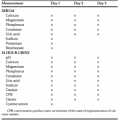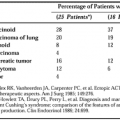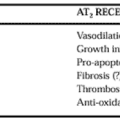MODEL OF THYROID-HORMONE RECEPTOR ACTION
On the basis of these findings, a model for the mechanism of basal repression and transcriptional activation has emerged (Fig. 31-7). When ligand is absent, TR homodimers or TR/RXR heterodimers bind to the TRE and complex with corepressor, which, in turn, interacts with mSin3 or a related protein, and histone deacetylase. This complex may keep surrounding histones deacetylated and maintain chromatin near the TRE in a transcriptionally repressed state. When ligand is present, the TR/corepressor complex dissociates and is replaced by a coactivator complex that likely contains CBP and the histone acetylase p300/CBP associated factor (PCAF). These changes result in remodeling of chromatin structure and nucleosome positioning. The subsequent recruitment of RNA polymerase II to the transcription initiation site within the minimal promoter results in transcriptional activation. This model is probably an oversimplification as other proteins likely exist that form the TR/coactivator complex,29,30 which may interact directly with the basal-transcriptional machinery or other transcription factors. The identities of these proteins and their protein/protein interactions remain to be elucidated.
Stay updated, free articles. Join our Telegram channel

Full access? Get Clinical Tree






